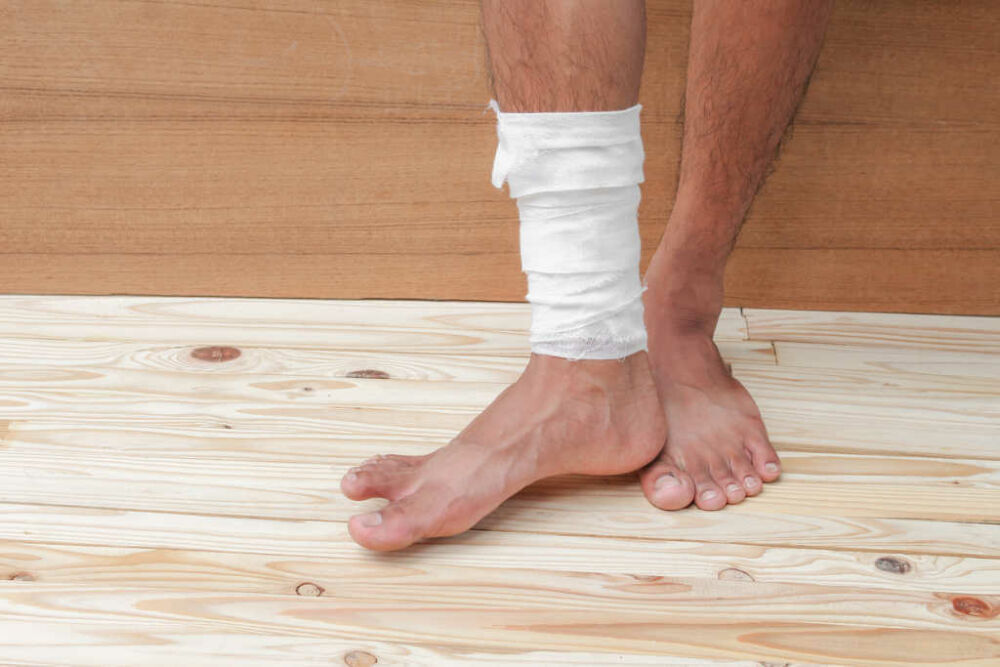
Caring for Venous Ulcer Wounds
Those suffering from varicose veins are at greater risk of a venous ulcer. At-home remedies can help heal the open

Wounds on the lower legs can be painful and frustrating, especially when they refuse to heal. According to the American College of Surgeons, arterial and venous ulcers are among the most common types of non-healing wounds. Although both are types of leg ulcers, they have different causes and require distinct treatments. Proper diagnosis is key to determining the best course of action for healing these wounds.
Understanding the differences between arterial and venous ulcers can help you make informed decisions about your care and ensure that you receive the right treatment as soon as possible. If you suspect that you have a venous ulcer or any non-healing wound on your lower leg, it’s crucial to seek medical attention right away.
At Center for Vein Restoration (CVR), our team of vein care specialists is equipped with the expertise and advanced technologies to accurately diagnose and treat your condition, helping you heal faster and avoid future complications. Don't wait—contact us today for expert care by calling 240-965-3915. You may also SCHEDULE AN APPOINTMENT ONLINE.

Venous ulcers are the most common type of chronic wound, typically forming on the lower legs or ankles. These ulcers occur when the veins in the legs fail to return blood back to the heart efficiently, a condition known as chronic venous insufficiency. This leads to a buildup of pressure and fluid in the legs, which can cause the skin to break down and form an ulcer.
According to the National Institutes of Health (NIH), venous ulcers can be slow to heal, often taking several months of specialized care. Early diagnosis and treatment are essential for managing the underlying venous disease and speeding up healing.
Arterial ulcers, also known as ischemic ulcers, develop when there is insufficient blood flow to the lower limbs. This lack of blood flow, or ischemia, deprives skin and tissues of the oxygen they need, eventually leading to tissue death and open sores. Arterial ulcers are typically found on the feet, toes, or heels, and they often cause intense pain, particularly when the legs are elevated.
People with conditions that reduce blood flow, such as atherosclerosis, diabetes, or peripheral artery disease (PAD), are at a higher risk for arterial ulcers. According to the Cleveland Clinic, managing these underlying conditions is essential for preventing arterial ulcers and their complications.
Distinguishing between arterial and venous ulcers is crucial for getting the right treatment. However, because they both cause open wounds on the lower legs, it can be challenging for someone without medical training to identify the difference.
Here are a few key differences:
If your wound has not healed after four weeks, it’s important to seek medical attention immediately. Center for Vein Restoration can help you determine whether the ulcer is venous or arterial and recommend the best treatment plan.
Both arterial and venous ulcers can be difficult to heal without medical intervention. In many cases, the body needs help addressing the underlying causes, such as poor circulation or venous insufficiency. If left untreated, these ulcers can worsen and lead to complications like infection, tissue damage, or even amputation.
According to the Mayo Clinic, non-healing ulcers pose a high risk for infection, which can cause further damage to the skin and surrounding tissues.
Center for Vein Restoration is recognized as a leader in venous disease management. We use the latest advancements in wound care to treat venous ulcers effectively. Treatment often involves addressing the underlying venous insufficiency, which may include procedures to improve blood flow, such as compression therapy, sclerotherapy, or laser ablation.
At CVR, we believe in a comprehensive approach to ulcer care. This means we don’t just treat the wound itself—we address the root cause of the ulcer to prevent recurrence. Patients can trust that our experienced team of physicians will provide compassionate, expert care tailored to their individual needs.

If you have an ulcer on your lower leg, foot, ankle, or heel that hasn’t healed after four weeks of routine care, it’s time to consult a medical professional. Both arterial and venous ulcers require prompt attention to avoid serious complications.
Center for Vein Restoration has more than 110 locations across the United States. Our vein specialists are experts in diagnosing and treating venous ulcers, and we are committed to helping patients heal and restore their quality of life.
Don’t wait! If you have a non-healing wound, schedule an appointment with Center for Vein Restoration today by calling 240-965-3915 or visiting our website to book an appointment online.
